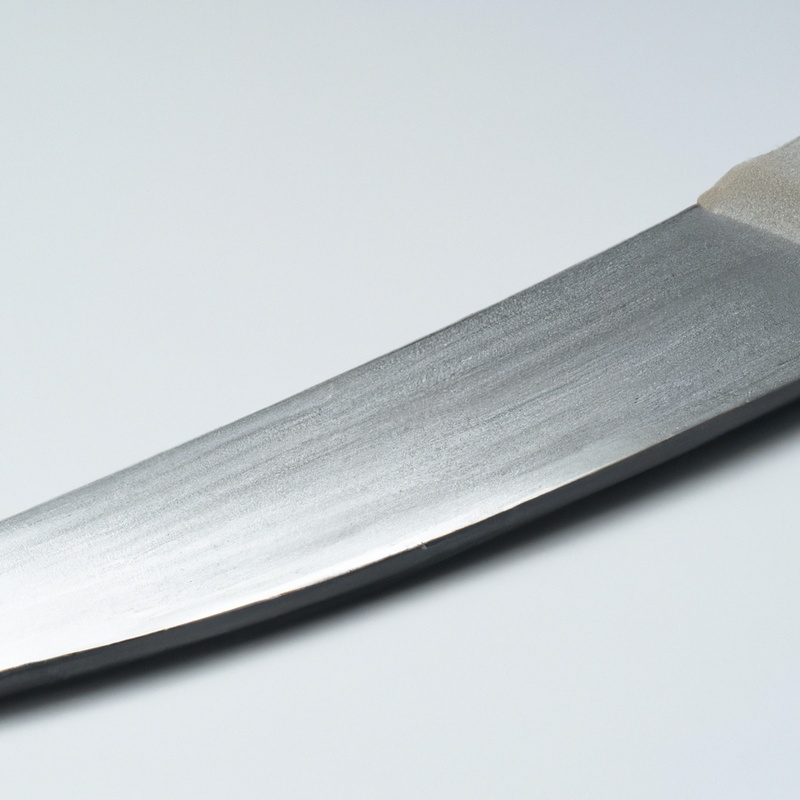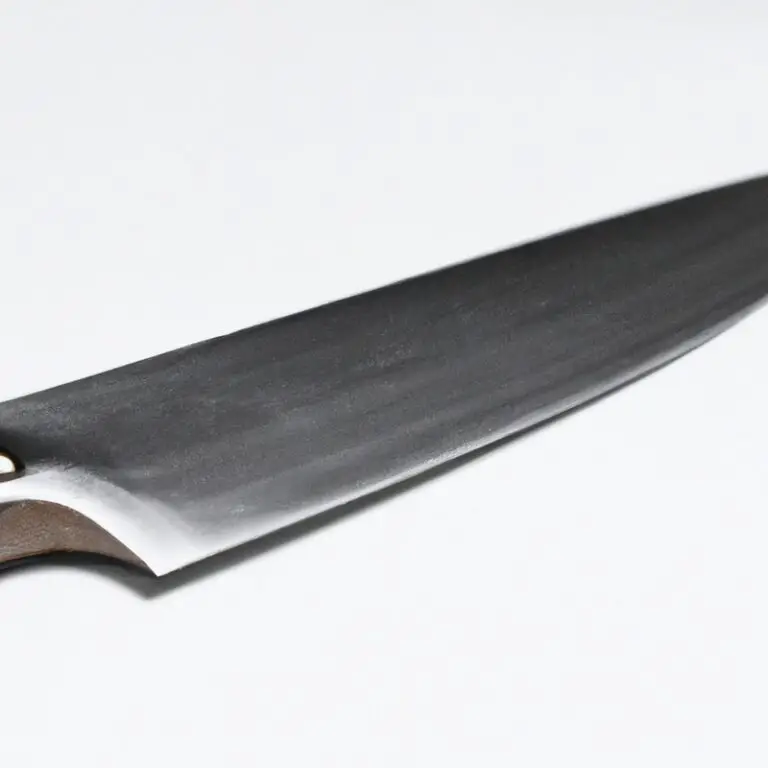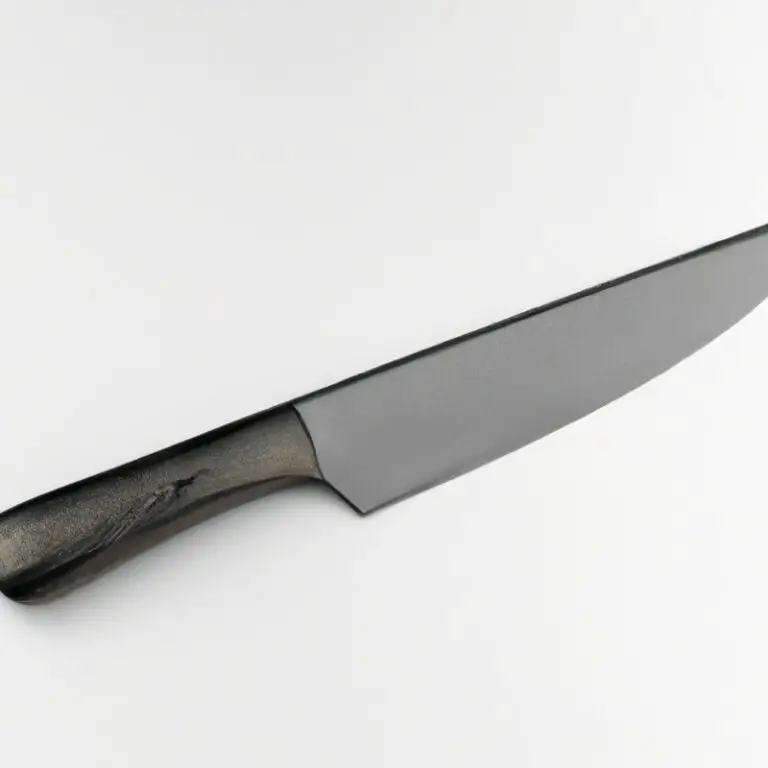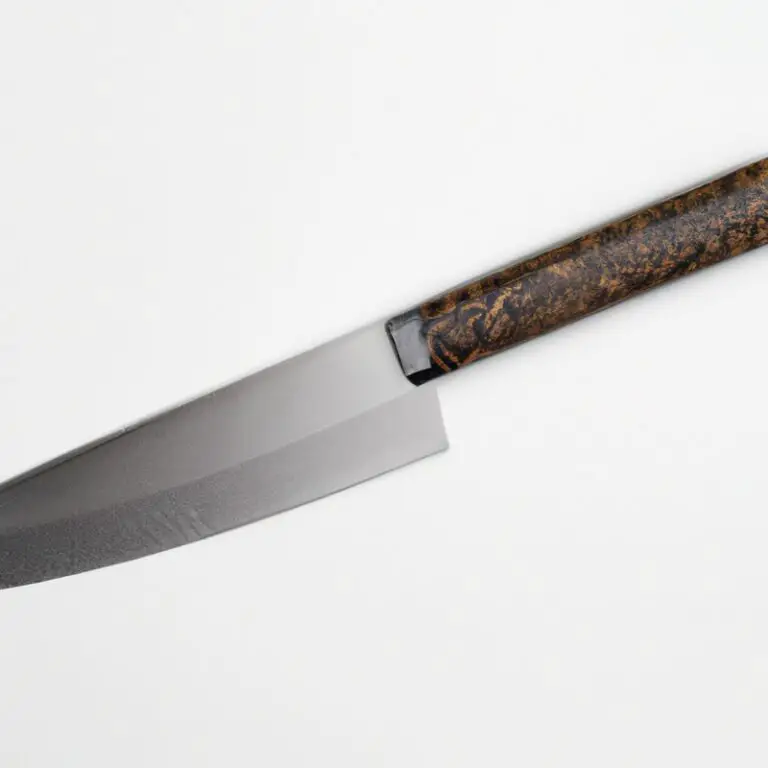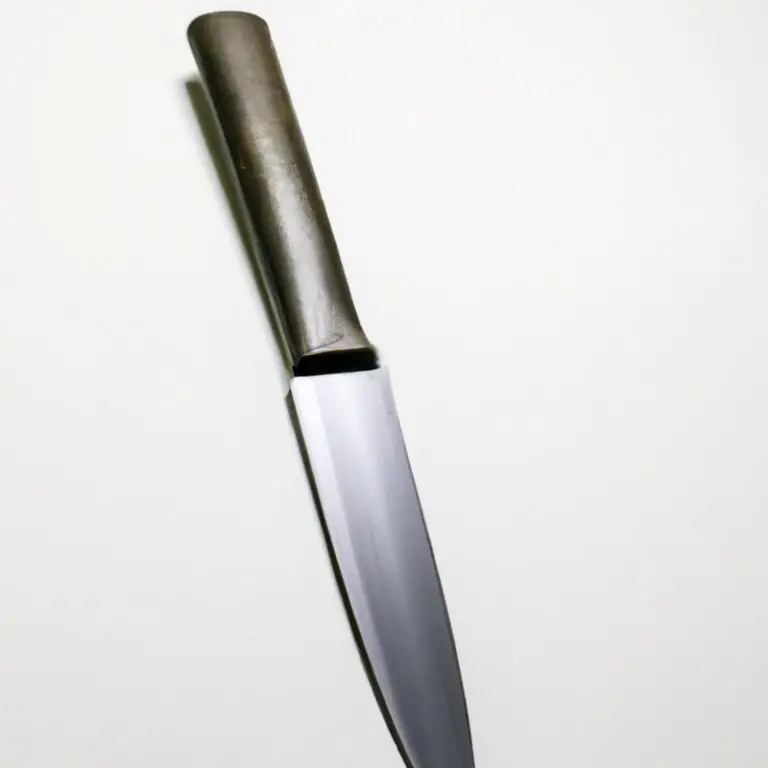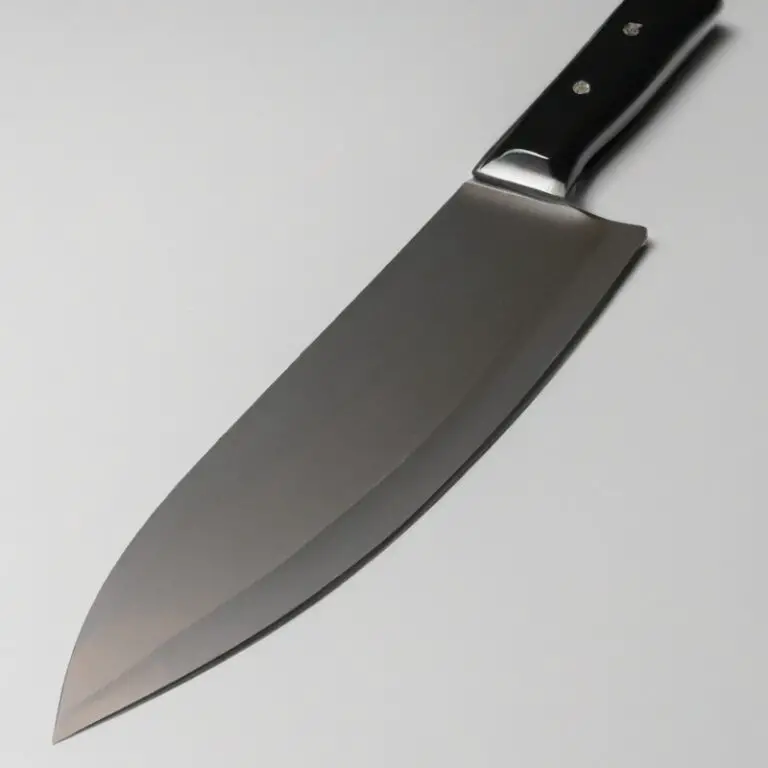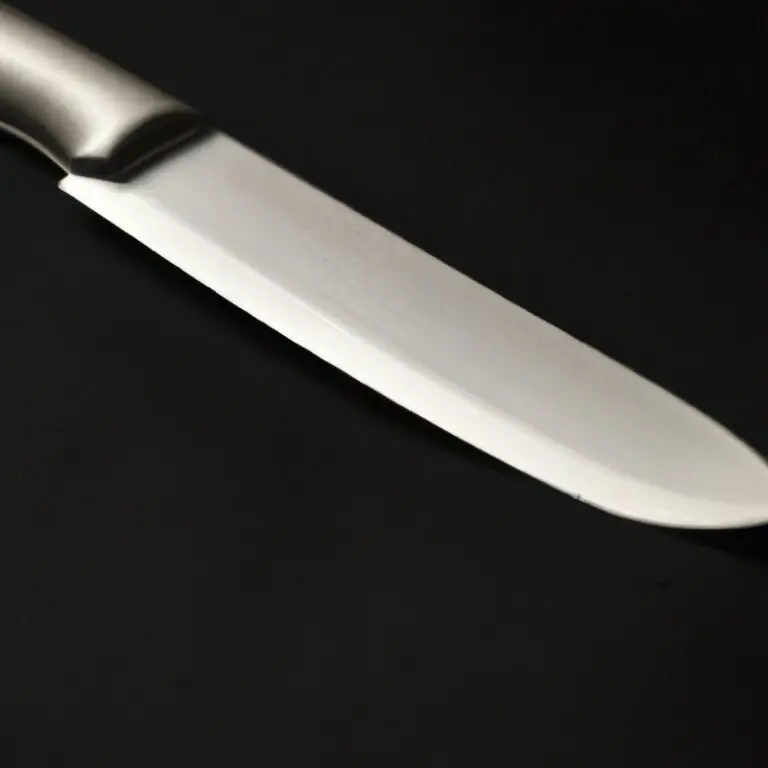How To Keep Gyuto Knives Dry And Protected Inside a Sheath? Safely
Key Takeaways:
- Properly drying and storing your Gyuto knife in a sheath can extend its lifespan.
- Avoid leaving your knife in a wet or humid environment to prevent rust and damage.
- Use a cloth to dry your knife thoroughly before storing it in a sheath.
- Regularly oiling your Gyuto knife can also help protect it from moisture and corrosion.
“I bet you’ve all experienced that moment when you pull out your kitchen knife from a sheath only to find it dripping with water. Not only does it make the blade slippery, but it also shortens its lifespan.
If you’re an avid cook, you know the importance of investing in good quality knives and taking care of them properly.
In this article, I will guide you on how to keep your Gyuto knives dry and protected inside a sheath. We will cover everything from proper cleaning techniques before sheathing to the different types of sheaths available, including customized ones, and maintenance tips to extend their lifespan.”
| Method | Description |
|---|---|
| Blow Dry | Use a hairdryer or air compressor to blow out any moisture and debris inside the sheath. |
| Paper Towel | Wrap the blade of the knife with a paper towel before inserting it into the sheath to absorb any leftover moisture. |
| Silica Gel Packets | Place a small packet of silica gel inside the sheath to absorb any moisture. |
| Camellia Oil | Apply a thin layer of camellia oil on the blade before inserting it into the sheath to prevent rust and corrosion. |
| Honing Oil | Apply honing oil on the blade before inserting it into the sheath to protect it from moisture and prevent rust. |
| Oiling the Sheath | Apply a light coat of oil on the inside of the sheath to protect the knife blade from moisture and prevent rust. |
Types of sheaths for Gyuto knives
There are various types of sheaths available for Gyuto knives, each with its own unique benefits. Some popular materials used for sheaths are leather, plastic, and wood.
Leather sheaths are durable and can protect the knife from moisture and scratches.
On the other hand, plastic sheaths are lightweight, easy to clean, and ideal for outdoor activities. Magnetic sheaths are also gaining popularity among Gyuto knife users as they provide a secure hold and allow for quick and easy access to the knife.
Additionally, there are customizable sheaths available that can be tailored to a user’s needs and preferences.
When selecting a sheath for your Gyuto knife, it is essential to consider the type of activities the knife will be used for. A sheath that is suitable for camping may not be ideal for home use.
Regardless of the type of sheath, make sure it fits your knife securely to protect against damage.
Selecting the right sheath for your Gyuto knife is crucial in ensuring its safety and longevity. Consider the pros and cons of each type of sheath before making a purchase, and always make sure to properly clean and store your knife to prevent any damage.
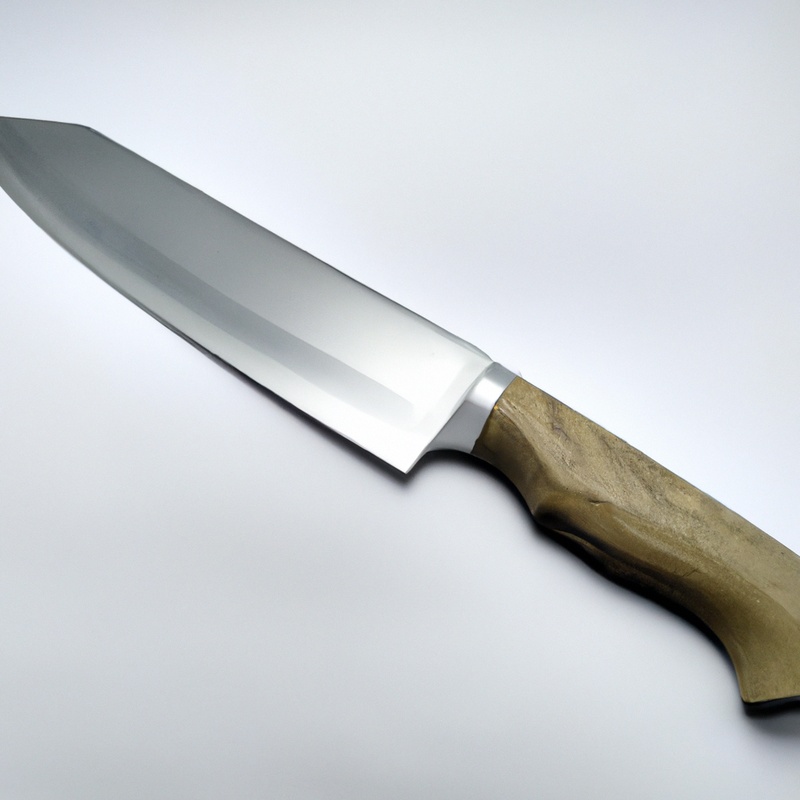
Importance of keeping Gyuto knives dry
Keeping Gyuto knives dry is crucial to prevent rust and corrosion on the blade, ensuring its longevity and optimal performance. Moisture on the blade can easily damage it, leading to it becoming blunt or prone to chipping.
In addition, water can seep through the handle and damage the inner parts, further reducing the knife’s overall quality.
Therefore, it is important to dry the knife thoroughly after washing it and before storing it in the sheath. This can be done by wiping the blade with a clean dry cloth and leaving it in a well-ventilated area to eliminate any remaining moisture.
By keeping the Gyuto knife dry, you can extend its lifespan, maintain its sharpness, and enjoy its premium quality for years to come.
Proper cleaning techniques before sheathing
Before sheathing your Gyuto knife, proper cleaning is essential to ensure its longevity and prevent any damage or corrosion. Here are some techniques to follow:
- Rinse the knife with warm water and wipe it down with a clean cloth.
- Use a mild soap to clean the blade, avoiding harsh chemicals that can cause corrosion.
- For tough stains or built-up grime, use a soft-bristled brush or sponge and be gentle.
- Dry the blade thoroughly with a towel or cloth to prevent rust.
- Apply a food-safe oil or wax to protect the blade from moisture and humidity.
By taking the time to properly clean your Gyuto knife before sheathing, you can maintain its sharpness and prevent any potential damage. Keep in mind that regular maintenance and cleaning are essential to keep your knife in top condition for years to come.
Securing the knife in the sheath
Securing the knife in the sheath is crucial for the safety of both the knife and the user. The knife should fit snugly inside the sheath to prevent it from slipping out.
Some sheaths have snap closures, while others use friction to hold the knife in place.
Regardless of the type of closure, make sure it is secure before carrying the knife. Additionally, avoid putting pressure on the cutting edge when inserting or removing the knife from the sheath as it may damage the sharp edge.
Properly securing the knife in the sheath will prevent accidents and maintain the knife’s sharpness.
Storing the sheathed knife in a dry place
Storing the sheathed knife in a dry place is crucial for preserving the quality and durability of a Gyuto knife. Moisture and humidity can cause rust, corrosion, and damage to the blade, handle, and sheath.
It can also accelerate bacterial growth and odour, making the knife unsafe to use.
Therefore, it is recommended to store the sheathed knife in a cool and dry place, away from direct sunlight, heat, and moisture. Some effective storage options for a Gyuto knife include a knife block, magnetic strip, or drawer organizer that allows the knife to remain well spaced, dry and protected.
Additionally, storing the knife with a silica gel packet can combat any remaining moisture in the surrounding air.
It is worth highlighting that simply placing the knife in a sheath does not provide total protection against moisture or humidity. Thus, it is imperative to clean the knife thoroughly and dry it properly before sheathing and storing it.
Investing in a quality sheath that fits the knife perfectly and is made of moisture-resistant materials like leather or plastic is also highly recommended.
Storing the sheathed knife in a dry place should be prioritized to maintain the blade’s sharpness, prolong its lifespan and prevent any damages or rusting.
Materials for making sheaths
Sheaths can be made from a variety of materials, including leather, plastic, wood, and fabric. Leather is a popular choice as it is durable and offers good protection.
Plastic sheaths are lightweight and easy to clean, while wooden sheaths provide a traditional aesthetic.
Fabric sheaths are typically made from synthetic materials such as nylon and are often used for travel or outdoor activities. It is important to consider the material’s durability and ability to protect the knife when selecting a sheath.
Customized sheaths made with high-quality materials can offer a more snug fit and better protection for the knife.
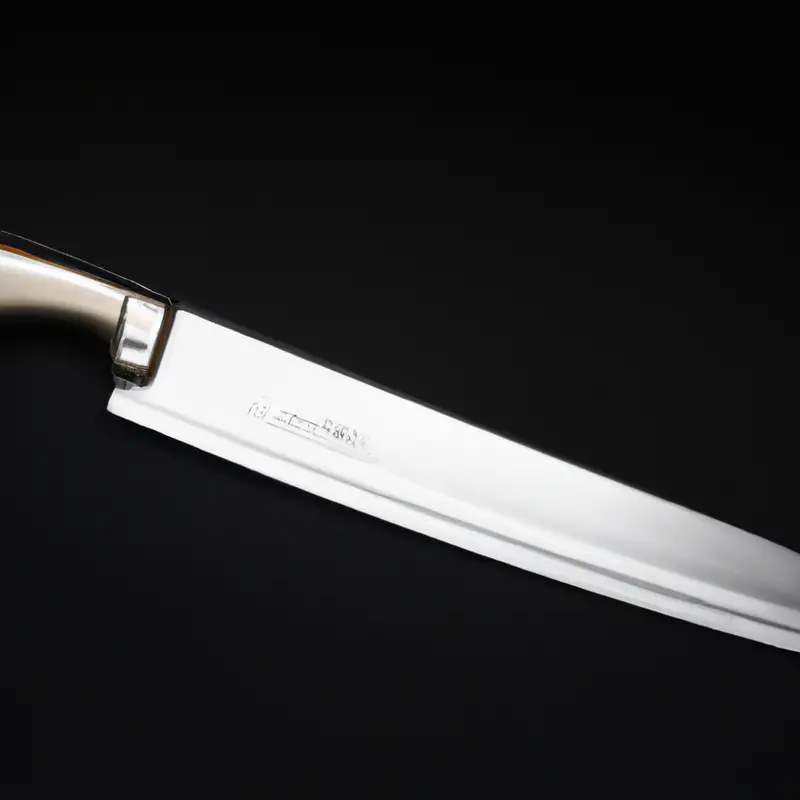
Customized sheaths and their benefits
Customized sheaths are a popular choice for professional chefs and avid home cooks who want to ensure the best protection for their Gyuto knives. These sheaths are made specifically for the knife’s dimensions and offer a snug fit, which prevents the knife from rattling around and potentially chipping its edge.
In addition to providing a better fit, customized sheaths can also be made from a variety of materials, offering the opportunity to choose the best option for individual needs.
For instance, some cooks may prefer leather for its aesthetics, while others may prefer plastic or silicone for its easily washable properties. Moreover, customized sheaths are often more durable than traditional ones, as they are specifically crafted to withstand daily use.
This also makes it easier to maintain the longevity of a knife and protect it against rust and corrosion.
Customized sheaths also offer an extra degree of customization, allowing chefs to add embellishments or designs to further identify their knives in busy kitchens. Overall, investing in a customized sheath is a wise choice for those who require high-quality protection and preservation of their Gyuto knives.
Maintenance of knife and sheath
Maintenance of knife and sheath is essential to ensure their longevity. After use, it is crucial to clean the knife properly and dry it with a clean towel before sheathing.
This helps to prevent rust and keep the knife in good condition.
The sheath should also be regularly cleaned and conditioned to prevent the accumulation of moisture and dirt, which can lead to bacterial growth and rusting of the knife. Avoid exposure to extreme temperatures and sunlight, which can cause discoloration and reduce the lifespan of the sheath.
When using a custom sheath, ensure that it fits the knife securely to prevent accidental exposure of the blade.
Additionally, avoid storing the knife in a wet or humid environment, as this can lead to rusting and damage to the blade and sheath. It is important to note that while storing the knife in a sheath provides a level of protection, it is not a substitute for proper care and maintenance.
Regular cleaning, drying, and storing in a dry place are necessary to ensure the longevity of both the knife and its sheath.
Alternatives to traditional sheaths
Apart from traditional sheaths, there are other options for keeping your Gyuto knife dry and protected. One alternative is a magnetic knife holder, which can be mounted on a wall or countertop.
This allows for easy access to the knife while keeping it out of harm’s way.
Another option is a knife block, which can hold multiple knives and is designed to keep them upright and organized. However, it is essential to make sure the knife block has slots that are large enough to accommodate your Gyuto knife.
Silicone edge guards are another alternative.
They slip over the edge of the blade, protecting it from scratches and nicks. These guards are not as effective at keeping the knife dry as sheaths or other options, but they are a good choice for short-term storage.
Some people prefer to wrap their Gyuto knife in a cloth or tea towel before storing it.
This provides a barrier between the blade and any moisture in the storage area. However, it is crucial to ensure that the cloth is clean and dry before using it.
Ultimately, the best alternative to a traditional sheath is the one that works best for you and your needs.
It is essential to keep in mind that whichever option you choose, proper maintenance and storage techniques are necessary to ensure the longevity and sharpness of your Gyuto knife.
Hazards of not properly drying knives before sheathing
Failure to dry a Gyuto knife before sheathing can result in significant hazards. When moisture is left on the blade, it can cause rust and corrosion.
This not only damages the knife’s sharpness but also compromises its hygiene, making it unsanitary for food preparation.
The accumulation of moisture in the sheath can also lead to mildew and mold growth, further deteriorating the knife’s condition and rendering it unusable. To avoid these hazards, always dry your Gyuto knife thoroughly before storing it in a sheath.
Final Verdict
It is essential to keep your Gyuto knives dry to prevent rust and other forms of damage. Choosing the right type of sheath, cleaning the knife thoroughly before sheathing, and securely storing the sheathed knife in a dry place are essential steps to ensure the longevity of your knife.
Proper maintenance of both the knife and its sheath is crucial to guarantee their effectiveness.
Remember that not following these guidelines can lead to hazards such as personal injuries or ruined knives. By implementing these simple tips and being diligent, your Gyuto knife will remain in pristine condition for a longer time.
Long gone are the days of ruined knives and constant replacements.
Now, you can sit back and enjoy your knife’s effortless cutting performance with confidence.

